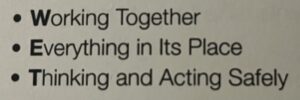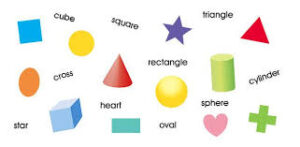Here is the Feedback and my own Self-Assessment from my Professional Dialogue Paper!
Feedback & Self-Assessment on Dialogue Paper
Here is the Feedback and my own Self-Assessment from my Professional Dialogue Paper!
Feedback & Self-Assessment on Dialogue Paper
During this week, I missed the physical class. However, I did not miss out on the content of the textbook and the peer feedback for my Professional Dialogue Paper! The chapters due to be read for this week were chapters 9, 10, and 11, which were the last chapters of this text book. My symbol for the content and tasks of this week is a light bulb. A light bulb turns on when given energy/power, if our brains are the light bulbs, ourselves, peers, assessments, communication all feed towards powering our personal light bulbs.
Chapter 9 is based on communication with learning, chapter 10 is on evaluating and reporting, and chapter 11 is based on learning by ourselves and with others. These three ideas are critical standing points when it comes to working together, working alone, assessing, learning, and how communication benefits these processes as a whole.
Going further, in chapter 9 “there are two parts to successful communication about learning: 1. Students collect and demonstrate their learning. 2. Audiences respond with feedback” (Davies, 2020, p. 86), with communication and assessment, this further adds to our growing light. This give and outlet to practice demonstrating what we know and doing so in a healthy way that lets us learn and apply more successfully over time. All while the student or ourselves are being the sources of our own learning and progression.
Learning to understand what we know and how to evaluate it and send it forth in a strong skill that adds onto our shining light. Triangulation is a strategy that supports the criticism process in a way that is not negative or looking down on students, others, or ourselves “Triangulation of evidence- looking at evidence from three different sources- is essential because it puts single pieces into context… the evidence students have collected, the self-assessments they have made, our observations, criteria-based assessments attached to projects or assignments, performance grids, rubric scores, and grades from projects and tests” (Davies, 2020, p. 95). This is a way of utilizing ourselves, communication, and working together to build onto what we know.
The last chapter dives into Learning Circles. Personally, I have extremely enjoyed the Learning Circles and what the process, my peers, and myself offers to the table when we all come together “Learning circles- places where people learn from each other”(Davies, 2020, p. 105). This strategy applies all that we have been learning in one strong approach- being able to learn from one another is a great skill to have and fuels our lights.
I also received and provided peer feedback on my Professional Dialogue Paper. I love any opportunity to practice my assessing and feedback before having to go into the workforce. While reading the other person’s paper, I would find myself asking myself how I would want to receive any feedback. I wrote down my notes of my raw thoughts on another paper while going through the paper. Once I finished reading with my first impression, I read the paper again. Then I went to my notes and sifted through my suggestions and thought about how I would be able to go forward if I received any of the feedback. This gave me an outlet to provide key suggestions in a positive, healthy, yet informative way, while using the sandwich technique. I still had a layout of small critiques, then I gave my full bulb of positivity and growth. Not only was I feeding to another’s light, but my own as well.
Davies, A. (2020). Making Classroom Assessment Work (4th ed.). connect2learning.

This is my Professional Dialogue Paper for the ECS 401 course I am taking, click below to read!
Enjoy!
Baylee Anderson’s Professional Dialogue Paper
Best, Baylee
During this week’s class and Learning circle, we went over chapters 7 & 8 from the Making Classroom Assessment Work textbook. We also got to do another Poll Guru about highlighting aspects from the chapters and from our Learning Circles, which is always a plus in my books. Chapter 7 was about Using assessment to guide instruction. There was a useful acronym called W.E.T which stands for W- working together, E- everything in its place, T- thinking and acting safely. (Davies, 2020, p. 64). Even though I have never heard of this acronym before, I have believed in the components ever since I started working with other people in my environment and those who work with me. It is important to instill these goals and ideas when students are working with their peers and even with themselves to provide a healthy, organized, and successful work period. This is why my symbol for this week in the W.E.T. acronym. Chapter 8 was about collecting, organizing, and presenting evidence.
We were given an example of what to do for a future assignment, the sample given was a great way to highlight key points given from a previous chapter (4)(Davies, 2020, p. 33) which is also from the Making Classroom Assessment Work textbook . We were given a full video, which followed with descriptions of what worked well during that assignment- this gave us criteria to base our own assignments off of, which was another perspective/ way to see how to perform the assignment.
During the Poll Guru, we are usually asked questions about our own thoughts on how we were doing, how our peers are doing, and what we think about multiple topics and ideas. This relates to the topics of self assessment and student involvement during the chapters we went over “Engaging students in assessment in the service of learning results in students both learning and learning how to learn”(Davies, 2020, p. 63). This is a great way of applying the W.E.T. acronym, the idea of working together as a group for our own assessment and opinions where everyone is coming from in a safe space way.
During the Learning Circle this week, there were only four of us in the group, compared to our usual seven. However, the conversation flowed just as smoothly and effortlessly. This week some of us had to do a repeat job, which worked out as a benefit as we already had experience in those positions. We used the topics and outlines of the two chapters to guide conversation, however, we went on the path of talking about personal experiences. Usually we talk about our thoughts on the ideas or strategies at hand and why we think so, and then talk about it in reference to being in a classroom. However, I found that we primarily talked about personal moments and had a lot in common, to then reflect on it as a group. One big idea that was brought up was “rewriting tests”. We look at this point from the side of us as students, and us now as (future) educators. Many of us struggle with math. We all found that rewrites are a useful way to adapt existing testing models in a way that can be beneficial to all learners. We found that having the safety net of a rewrite helped with our anxious performances. We also found that when we did have to take the retest, it was usually in a different space where there were less students, and more opportunities and feelings of safety to ask for help.
Without consciously applying the W.E.T. method to our conversation, we still did! We worked together on figuring out why we as students might have felt a certain way, while also figuring out why we as teachers may still use or may not use certain methods. We concluded our thoughts in a safe space created by working together as a group and seeing that everything is in its place and whether or not it should be moved.
Thank you for reading!
Best, Baylee

This is a photo I took of page 64 of the Making Classroom Assessment Work textbook of the W.E.T acronym symbol for this week (Davies, 2020, p. 64).
Davies, A. (2020). Making Classroom Assessment Work (4th ed.). connect2learning.
During this week’s class, we went over chapters 5 & 6 from the Making Classroom Assessment Work textbook by Anne Davies. In these two chapters, some highlighted topics were about evidence, observation, triangulation, self-assessment, and feedback. My symbol for this week’s summary blog to represent the class is shapes- more specifically a triangle. I learned about a new strategy of Triangulation which is when evidence collected from 3 different sources over time, trends and patterns becoming apparent, and reliability validity of our classroom assessment is increased (Davies, 2020, p.47). We also dove into an example where we wrote a rubric of assessment for math students in grade five when they look at a square and rectangle with square grids inside.
Creating the rubric took about an hour and a half (roughly) where my group was given the task to try and create a rubric of assessment from the perspective of a student in the fifth Grade, then we elevated it based off of the curriculum, to then compare it to the the rubrics of the true assessment piece set for that assignment/outcome. This gave me a different outlook and perspective on how to assess students and applying different expectations on students- this also gave me intel on grade curriculums for those in grade 5, which was extremely new to me as I am in University for early elementary and I have no experience working with students of those ages.
The chapters this week were on the shorter side, however, they had the same amount of importance and intel. I would say that this section of chapters was one of my favourites, however, I am learning a plethora of new knowledge/ strategies/ and ideas from the textbook thus far.
During the learning circle, I was the recorder! Having this role this week, I found that I became even more attentive to my peers and was calculating my own thoughts more so before speaking them. This gave me another perspective on myself where I should be always acting and performing as if my thoughts and voice can be rewinded and played back to me.
The dialogue facilitator left plenty of space for us to build off of their questions, instead of a simple yes or no. We dove deeper into the concepts of observation and how we personally feel about the process of it and Triangulation. We also talked about how we felt and children/ students when we knew we were being observed and our assignments were products and not conversation. We also touched back on a phrase I mentioned in my previous summary of “keeping the end in mind” (Davies, 2020, p.25). We are starting to piece together how all of these seemingly small aspects that go into assessment and evaluation all play their own big and important role in the process of learning, observing, and assessing.
Another topic that played a large role in our learning circle was that of self-assessment and its process. We discussed how it is extremely important to have students involved in classroom assessment and their assessment for learning. We discussed that all children/students have important input on the goals, criteria, quality, and details being imparted to them, and how in order to give themselves feedback, we have to provide guidelines and structure while having them be part of their own teaching/ learning process.
Overall, this week’s class and learning circle gave a different outlook on what we have been covering and learning in this class. There are multiple shapes that learning can take depending on the steps we take as educators, and how we involve the students in their own learning.
Davies, A. (2020). Making Classroom Assessment Work (4th ed.). connect2learning.
